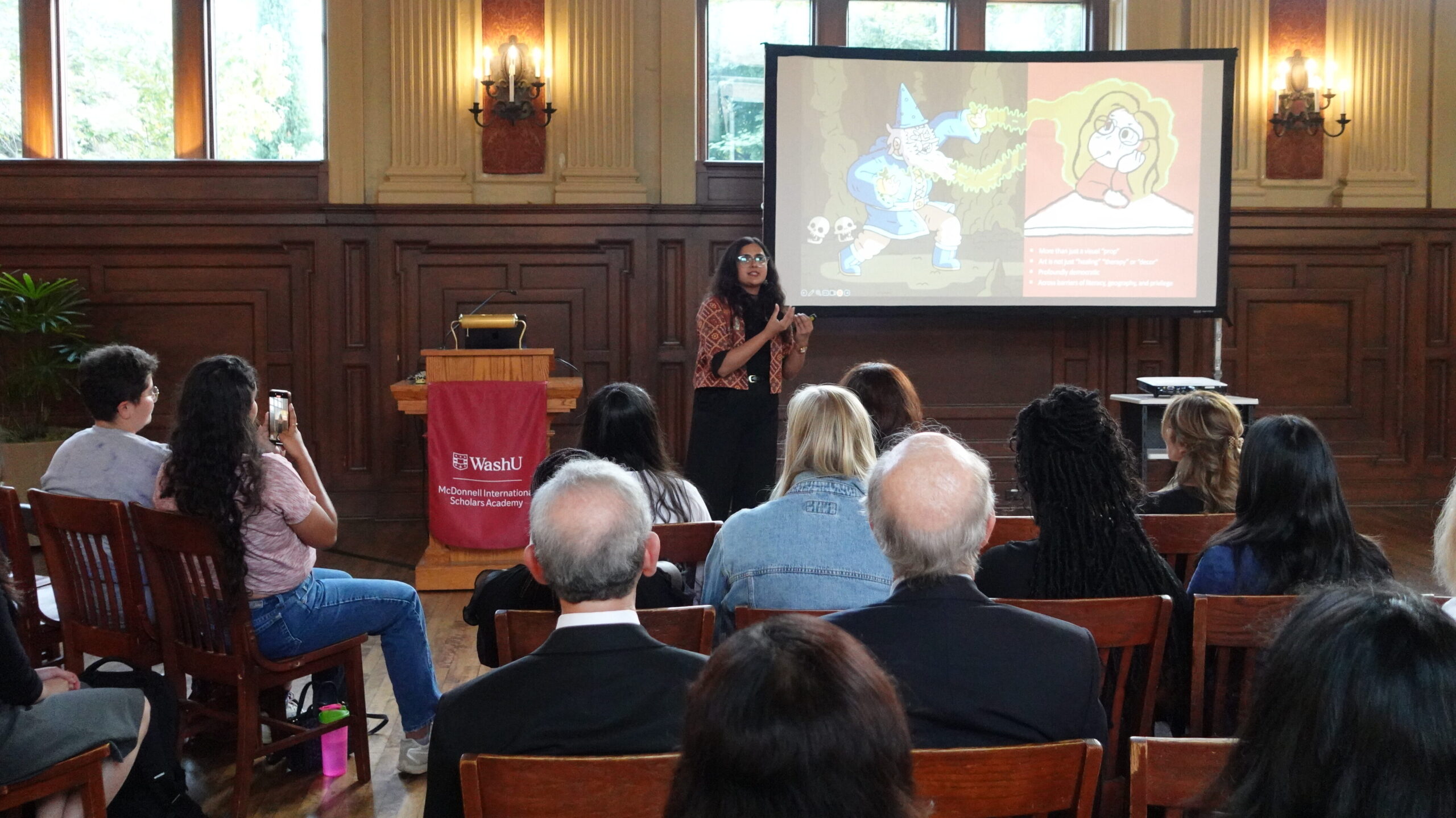Zainab Saleem is a visual designer and illustrator from Lahore, Pakistan, where she spent her formative years. Her academic journey was marked by excellence, graduating with distinction with a Bachelor of Design in Visual Communication Design from the National College of Arts. Zainab’s exceptional talent earned her a merit scholarship, distinguishing her as one of six individuals across the country chosen to represent her university for her work as a visual designer while raising her voice for important social causes. Zainab is now on the road to attaining an MFA in Illustration & Visual Culture from Sam Fox School of Design and Visual Art at WashU.
Zainab honed her skills while working as a senior visualizer at one of Pakistan’s largest brands, and her works circulate nationwide as a representation of her artistic expression. Through this experience, she discovered Illustration to be her true creative forte. Her work revolves around the representation of women and raising a visual voice against repression, un-layering cultural identity, and reviving cultural narratives in a post-colonial world. One of her notable achievements was her experiential exhibition, Being (Beyond and Within), which highlights one’s connection with their inner deeper self.
Aside from her academic journey, she enjoys basketball, painting, and reading.
Scholar Voices
Global Leadership Vision Op-Ed | Truck Art: Moving Murals from Pakistan
By Zainab Saleem | October 2025

Art is not just decorative, it is voice . A visual voice that makes leadership, awareness and change more accessible.
Growing up, I was told that art was frivolous, that true brilliance belonged to doctors or engineers only. Yet I always felt that images carried power words could not. For me, drawing was not doodling; it was my voice. Artistic practice was too often dismissed as marginal, “low” compared to professions aligned with science and technology. However, art is not just used to “heal” “therapy” or “decor” it serves a much bigger social purpose. It’s profoundly democratic, unlike written or technical discourse, it can be accessed across barriers of literacy, geography, and privilege. In that sense, art is tool for leadership.
I grew up believing I was “not smart enough,” because society measured intelligence by equations and textbooks but it is more than a just visual “prop”. Pakistan’s truck art provides a vivid case study of this principle, these embellished moving artworks always intrigued me with their colourful patterns, illustrations, birds, calligraphy, and poetry. Commonly characterised as kitsch, they are in fact a visual system that asserts identity and confers power. UNESCO has described it as “an instrument of advocacy,” noting its role in carrying social and political messages across otherwise fragmented spaces.
In 2015, UNICEF’s Truck Art Child Finder campaign used these vehicles to display portraits of missing children. Families in rural areas, who lacked access to newspapers or television, recognised their children and reunited with their children. It became infrastructure for awareness and gave autonomy to local people to develop their own voices beyond reliance of media to connect the community.
Critics argue that in the digital age, art has been reduced to a commodity: a scrollable image optimised for likes and shares. Platforms often reward trend-driven, easily consumable visuals over depth. However, the power of presence, the act of becoming part of the environments we move through cannot be eclipsed. In Karachi, 2020, a Pakistani truck artist painted a mural of George Floyd, Reuters reported how Ali used the truck as a canvas for solidarity, linking a local art form with a global call for racial justice (Reuters, 2020).
Truck art stands as Pakistan’s contribution to global visual culture, not as kitsch but as a complex representation of national identity. It reframes the country through beauty and ingenuity, foregrounding the creativity of its people in place of reductive stereotypes. In this sense, it is both cultural diplomacy and civic leadership. Its lesson reaches beyond Pakistan: art remains one of the most accessible forms of voice, capable of asserting presence where words or institutions fall short. To embrace art as leadership is not to romanticise it, but to recognise its strength—to let creativity break through as authority, as resistance, and as a tool for change
Bibliography:
UNESCO. “Truck Art: An Instrument of Advocacy.” UNESCO, 2023.
UNICEF. “Truck Art Child Finder Campaign Helps Reunite Missing Children with Families.” UNICEF Pakistan, 2015.
Associated Press (AP News). “Pakistani Trucks: Painted Symbols of Pride, Identity, and Artistry.” AP News, 2018.
The Guardian. “After the Floods the Future Looks Bright: Truck Art in Pakistan – A Photo Essay.” The Guardian, July 17, 2023.
